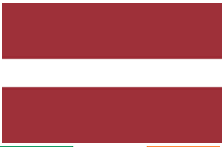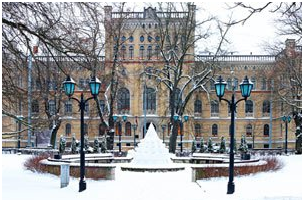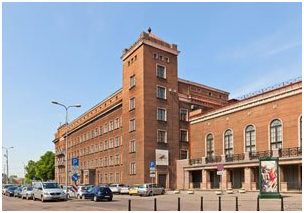Welcome to Landmark Consultant Services.

Latvia
Capital: Riga
Dialing code: +371
Currency: Euro
Population: 2.013 million (2013) World Bank
Colleges and Universities: University of Latvia, more
Latvia is a country on the Baltic Sea between Lithuania and Estonia. Its landscape is marked by wide beaches as well as dense, sprawling forests. Latvia’s capital is Riga, home to notable wooden and art nouveau architecture, a vast Central Market and a medieval Old Town with St. Peter's Church. Riga's museums include the Latvian Ethnographic Open-Air Museum, showcasing local crafts, food and music.
Latvia is comparatively small country in North-eastern Europe, on the east coast of the Baltic Sea and is bound by Belarus, Estonia, Lithuania and Russia. It is situated on a trade crossroads and has long since served as a bridge between Western Europe and Russia. Nearly one third of the 2.3 million people population live in Riga, the capital of the country. The landscape of the country is marked by lowland plains and rolling hills. It has an extensive network of rivers, thousands of lakes and hundreds of kilometres of undeveloped seashore lined by pine forests, dunes, and continuous white sand beaches. The official language is Latvian. The most widely used foreign languages in the country are English, Russian and German.
Higher Education System
In Latvia there is a difference between academic and professional higher education, nevertheless, it is not institutionalised. Universities and other higher education institutions run both academic and professional programmes, e.g. lawyer, teacher, translator, marine mechanic etc. Bachelor's (bakalaurs) and master's (maģistrs) degrees are awarded in both academic and professional higher education programmes. A master's degree is awarded after the second stage of academic/professional education (post-graduate studies) and requires a total of at least 5 years of university studies. Graduates of both types of bachelor's degree have access to master's studies, graduates of the master's degree - to doctoral studies.
Latvia is using a national credit point system in higher education. One Latvian national credit point is defined as a one-week full-time study workload. The average full-time workload of an academic year in most higher education programmes is 40 credits. The Latvian credit point system is compatible with ECTS. The number of ECTS credits is found by multiplying the number of Latvian credit points by a factor of 1.5.
The objectives of academic higher education are to prepare graduates for independent research, as well as to provide theoretical background for professional activities. Academic education programmes are implemented according to the national standard of academic education.

University of Latvia
Ranked 47th in the QS University Rankings: EECA 2016 and 651-700* in the overall QS World University Rankings® 2016/17, the University of Latvia is one of the largest and most prestigious universities in the Baltic States, located in Riga and home to around 15,000 students. Established in 1919, the university has been rated four out of five stars overall in the QS Stars rating system, and achieves five-star ratings in the categories ‘internationalization’, ‘teaching’, ‘facilities’ and ‘innovation’. The university offers a number of international programs taught either partly or completely in English, including medicine and dentistry.

Riga Technical University
Riga Technical University (RTU) is ranked joint 64th in the EECA ranking this year and was the first technical university of the Baltic States to be founded, dating back to 1862, when it was known as Riga Polytechnicum. In 1958, the technical institutes of the University of Latvia were separated to form the renewed Riga Technical University (RTU). Today, RTU is responsible for a great deal of research which is essential to the Latvian economy, and the university achieves three QS stars, including a five-star rating in the ‘employability’ category.
Riga Stradins University
The final Latvian university to feature in the EECA ranking is the public Riga Stradins University (RSU), ranked in the 111-120 range. Riga Stradins has 7,875 students currently enrolled, including 1,775 international students, with 50 countries represented in the student body overall, placing it in the EECA top 10 for proportion of international students. Originally founded as Riga Medical Institute in 1950, RSU has a particularly strong reputation for the health sciences and is the only Latvian university to have traditionally been integrated into the country’s healthcare system.
List of Universities
| Sr No: | Universities |
|---|---|
| 1 | BA School of Business and Finance |
| 2 | Daugavpils University |
| 3 | Latvia University of Agriculture |
| 4 | University of Latvia |
| 5 | Jazeps Vitols Latvian Academy of Music |
| 6 | Liepaja University |
| 7 | Rezekne Academy of Technologies |
| 8 | Riga Teacher Training and Educational Management Academy |
| 9 | Riga Graduate School of Law |
| 10 | Transport and Telecommunication Institute (TSI) |
| 11 | RISEBA University of Business, Arts and Technology |
| 12 | Riga Stradins University |
| 13 | Riga Technical University |
| 14 | Turiba University |
| 15 | Ventspils University College |
